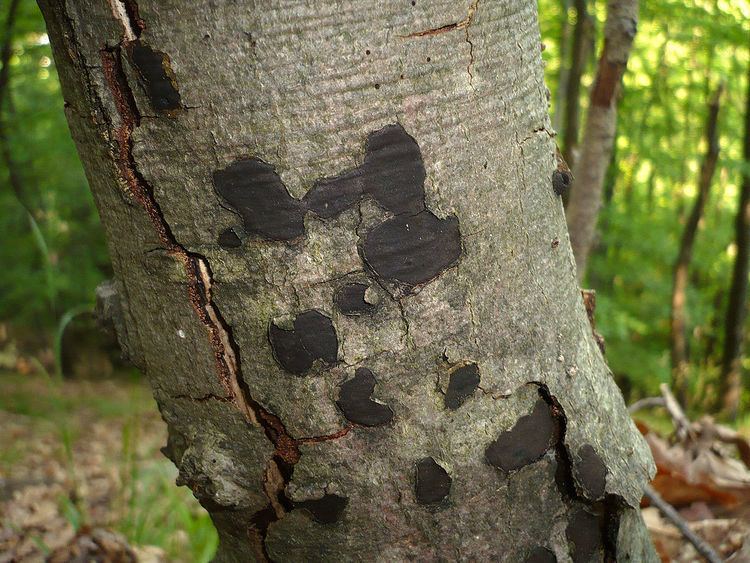Kingdom Fungi Rank Species | Family Xylariaceae Scientific name Biscogniauxia nummularia | |
 | ||
Similar Biscogniauxia, Hypoxylon fragiforme, Biscogniauxia marginata, Diatrype, Diatrypella | ||
Biscogniauxia nummularia is a plant pathogen in the family Xylariaceae, known as the beech tarcrust. The specific epithet is derived from the Latin "nummus" meaning a coin, referring to the often rounded and coin-like encrustations.
Contents
Description
The fruit body forms a thick and shiny black crust, on beech (Fagus) bark and is found at all times of the year. It is not edible. Young specimens are covered by a light brown outer layer. The spores are black to dark brown.
Distribution
Biscogniauxia nummularia is a common fungus specific for Fagus, and has been recorded throughout Europe and Russia, following the extensive distribution of its host tree.
As a primary pathogen
The decline of European beech (Fagus sylvatica) in Sicily and Calabria (Italy) has been linked to B. nummularia and experiments have suggested that this ascomycete plays a primary pathogenic role under certain environmental conditions. It typically causes strip-cancer and general wood decay.
